Straight after the NY weekend, The NA Scholar Neha and I got invited by Patty Seery to visit the Divers Alert Network in North Carolina to learn about their work and to complete a First Aid course for Professional Divers.
This was the perfect introduction to our year, to see what company is keeping us safe in the following 12 months, thanks to DAN´s donation of our Diving Accident Insurance, and I am now better prepared for helping fellow divers in need.
We visited every department of DAN and spoke to many people about not only their work at DAN, but also about their diverse backgrounds, both academically and regionally, and I found it very inspiring to see almost everyone had a background in scuba diving, but in very different ways and different extents. Their academic expertise often had not much to do with scuba diving, but in the end everything came together so that at DAN, they could combine their academic background with their passion for diving and help advance safety in this sport.
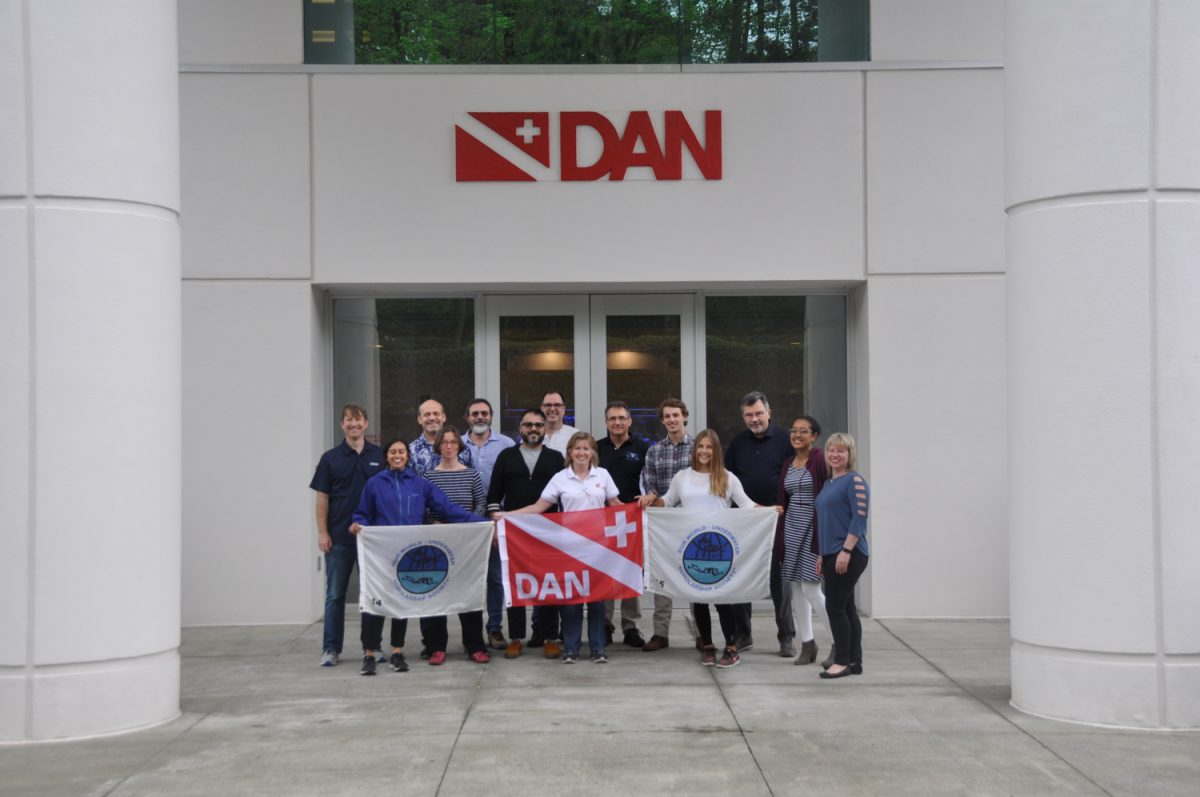
Getting nerdy with diving physiology and medicine
The Departments of Research in Diving Physiology and the Diving Medicine Team were particularly interesting to me because of my medical background, and I loved the opportunity to ask many questions about behaviour of inhaled gases under pressure, the physiological response of the body, decompression sickness and other topics.
Miss Frauke Tilman spoke to us about the physiological and pathological effects that occur while submerging your body in the hyperbaric conditions underwater, and she also gave us an insight in the current research that DAN is conducting. She showed us a fascinating Doppler Ultrasound Video of a diver´s heart after a dive, in which you could see Nitrogen bubbles forming in the right ventricle of the heart. These bubbles ideally only enter the small blood cycle of the lungs to be then breathed off. If the bubbles are present in the left ventricle though, which for example occurs in case of a Patent Foramen Ovale, these bubbles could enter the arterial system and can cause dangerous blockage and malnourishment in terminal blood vessels. What was very surprising to me, is that actually quite a big percentage of people have a Patent Foramen Ovale in their heart without knowing, it is a connection or a shortcut from the right into the left ventricle of the heart, which is physiological in embryos to circumvent the lung cycle which is not required in the womb. Nevertheless, this hole is supposed to close after birth, but often doesn´t do so.
New research is also being conducted on the potential alteration of heart rate and ECG under pressure, to be able to better estimate the effects on scuba divers with a heart condition or weakness. There really is a need to understand this as a great percentage of scuba diving accidents are related to cardiac problems.
For me, it was quite surprising and eye-opening that many of the processes happening in our body while diving are not known to a great extent yet, and there is a lot of research still to be done.
I was particularly fascinated with the fact that we know quite a lot about what decompression sickness is, however, we still don’t really understand when and why it occurs. Of course, there are factors that influence the probability, but fascinatingly our body can react differently in sensitivity each day and dive.
Counseling from life-savers and accident preventors
Neha and I were also allowed to listen to some calls that DAN received, in which they gave advice on health-related questions in scuba diving, not only in the case of an incident itself, but also when someone is in doubt about the compatibility of his or her condition with diving. So always remember, the DAN-hotline is not only for emergencies, you can always seek advice from the long-term experts in Diving Medicine and Physiology there as a precaution. Nevertheless, it was explained to us what steps are taken when an emergency call comes in to safeguard the injured diver to a physician that is familiar with diving medicine, or, if needed, to a hyperbaric chamber. I didn´t know that chambers can sometimes not accept diver emergencies, as they are being used by patients receiving treatment in hyperbaric medicine for many different purposes nowadays. Since the high pressure and delivered oxygen also has effects on the immune system and cells, it can also help with badly-healing wounds, and even some surgeries are conducted in the hyperbaric environment. – And even animals can be treated in hyperbaric chambers!
Stepping back in history and learning about the future
To top off Neha´s and my crash course on Hyperbaric Medicine, we were invited to visit the Duke Hyperbaric Chamber. We got a tour around the many chamber systems there, heard about how and why they operate within them, and learned about some history of diving medicine, which Duke has played a significant role in. We were also able to observe the preparations for a new research study for the development of an alarm system for hypoxyia in the case of rebreather failure, which is an important issue given the many fatalities due to rebreather dives.
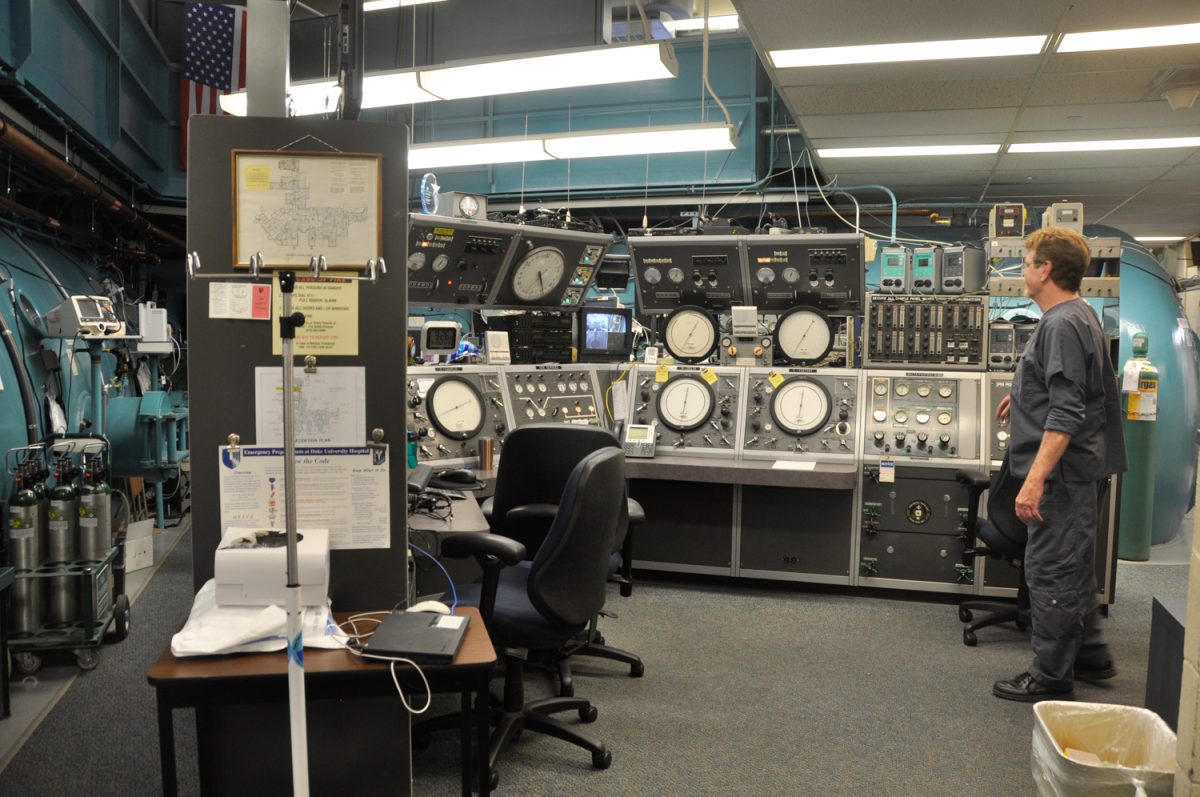
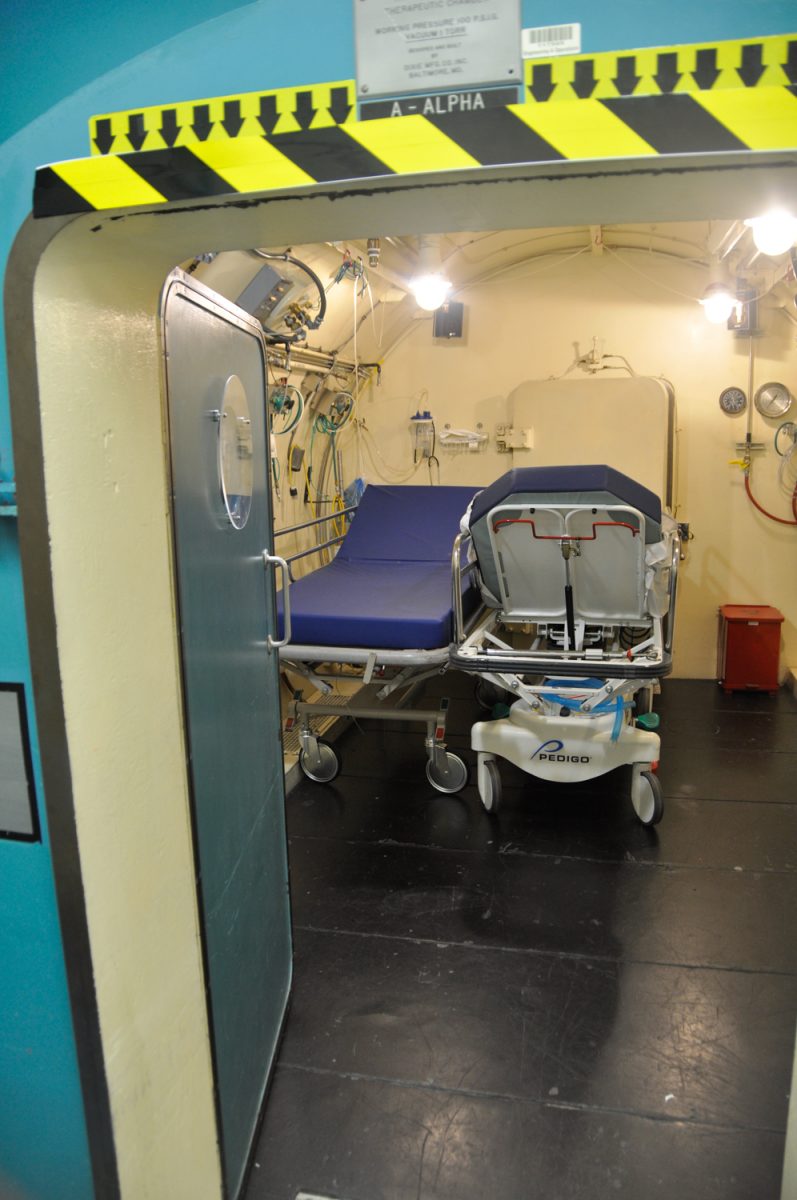
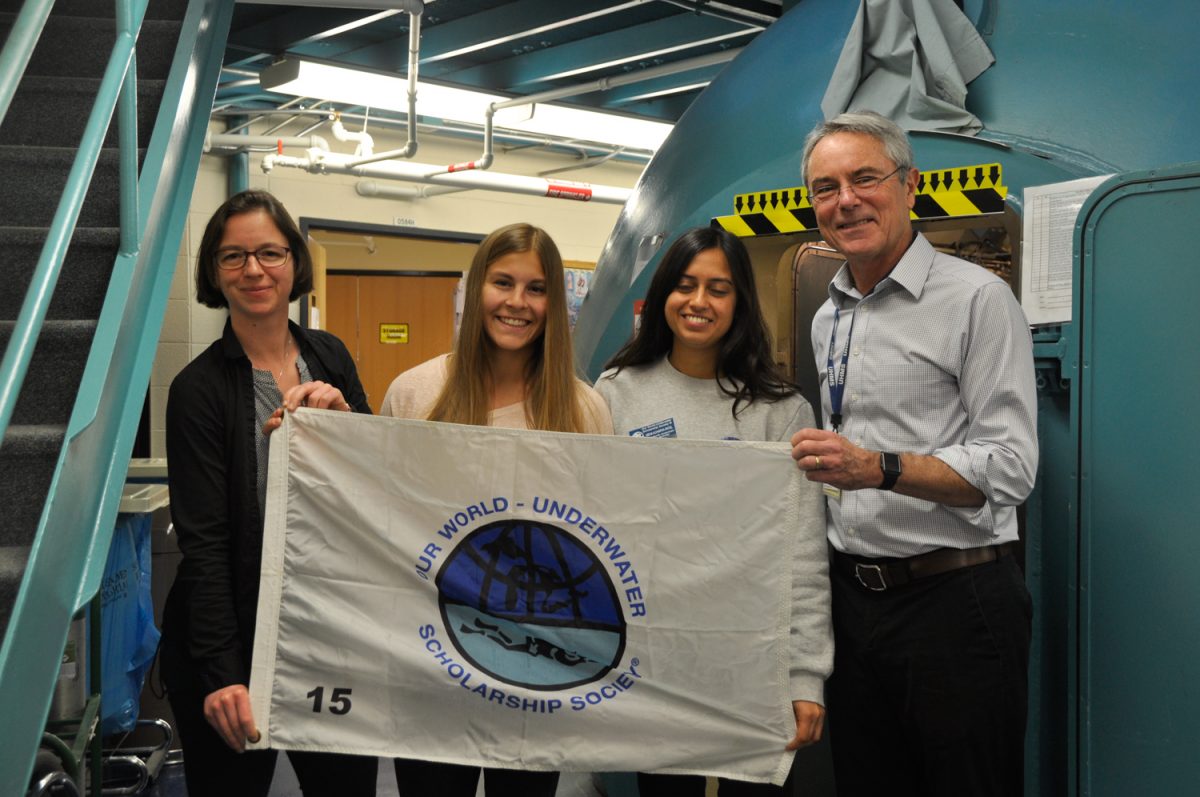
Saving lives can be fun!
The following days, we got instructed by Patty Seery in our Diving First Aid for Professional Divers course. This course was a lot of fun, while it taught us a wide variety of skills. We for example learned about the right steps in a response to an emergency, practicing CPR and Rescue breaths, delivering oxygen, wound treatment and splinting of fractures, and the treatment of injuries caused by marine life.
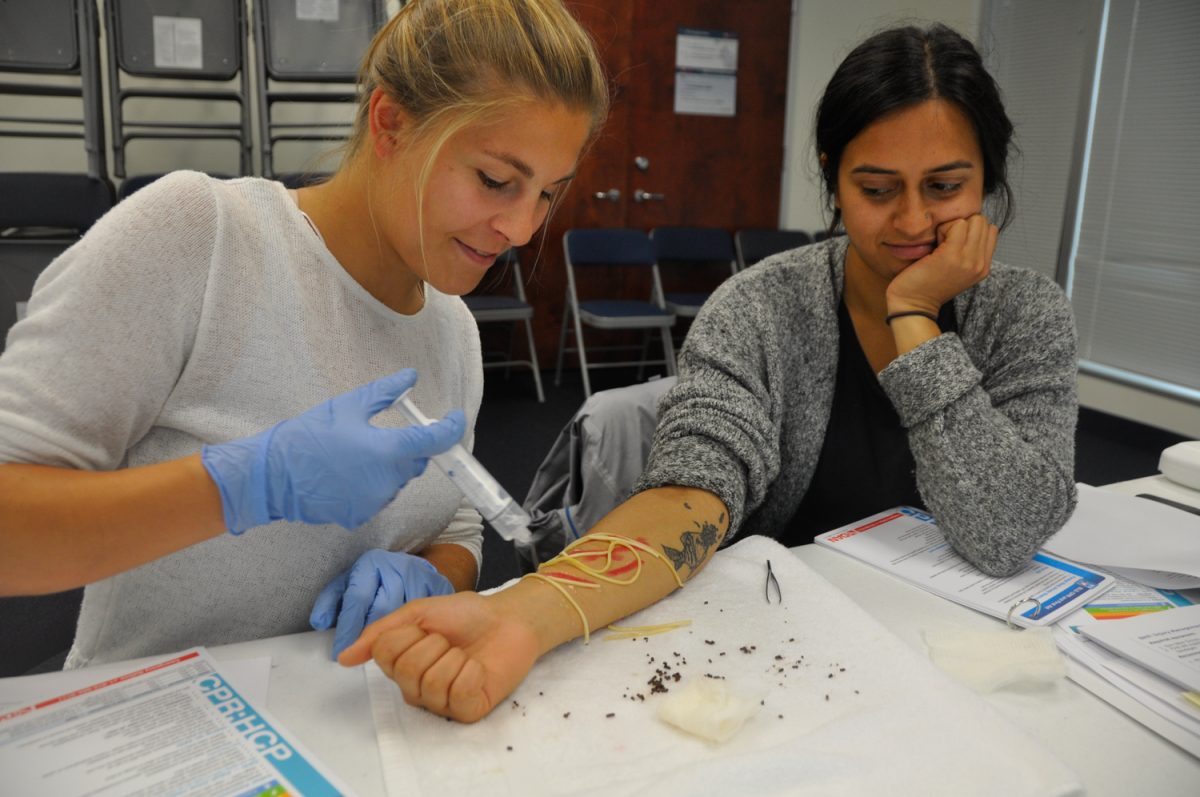
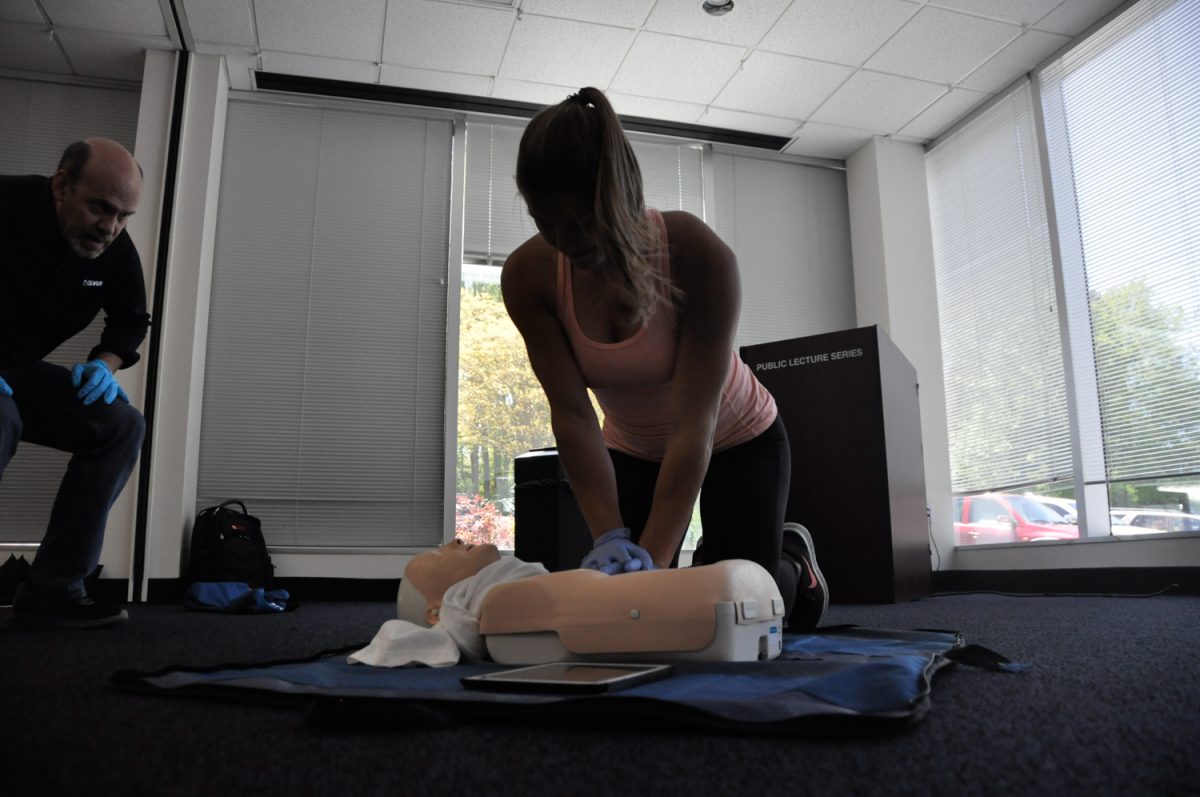
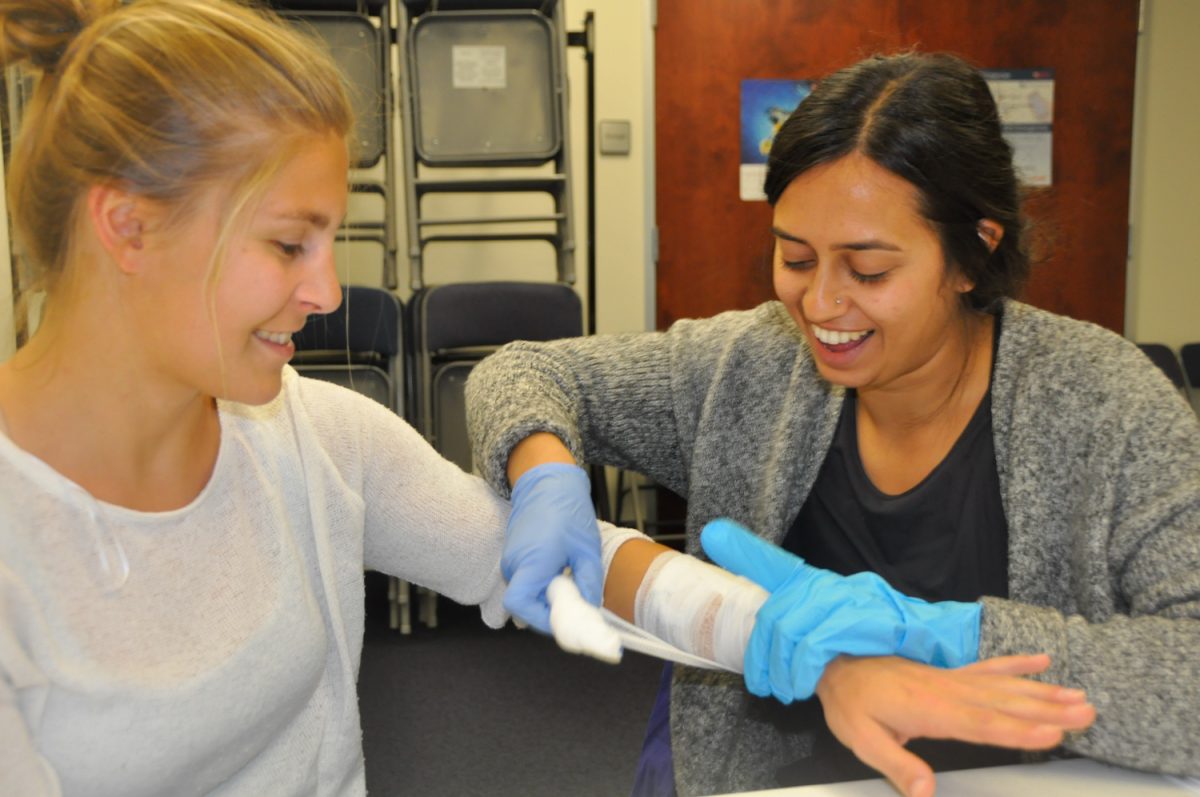
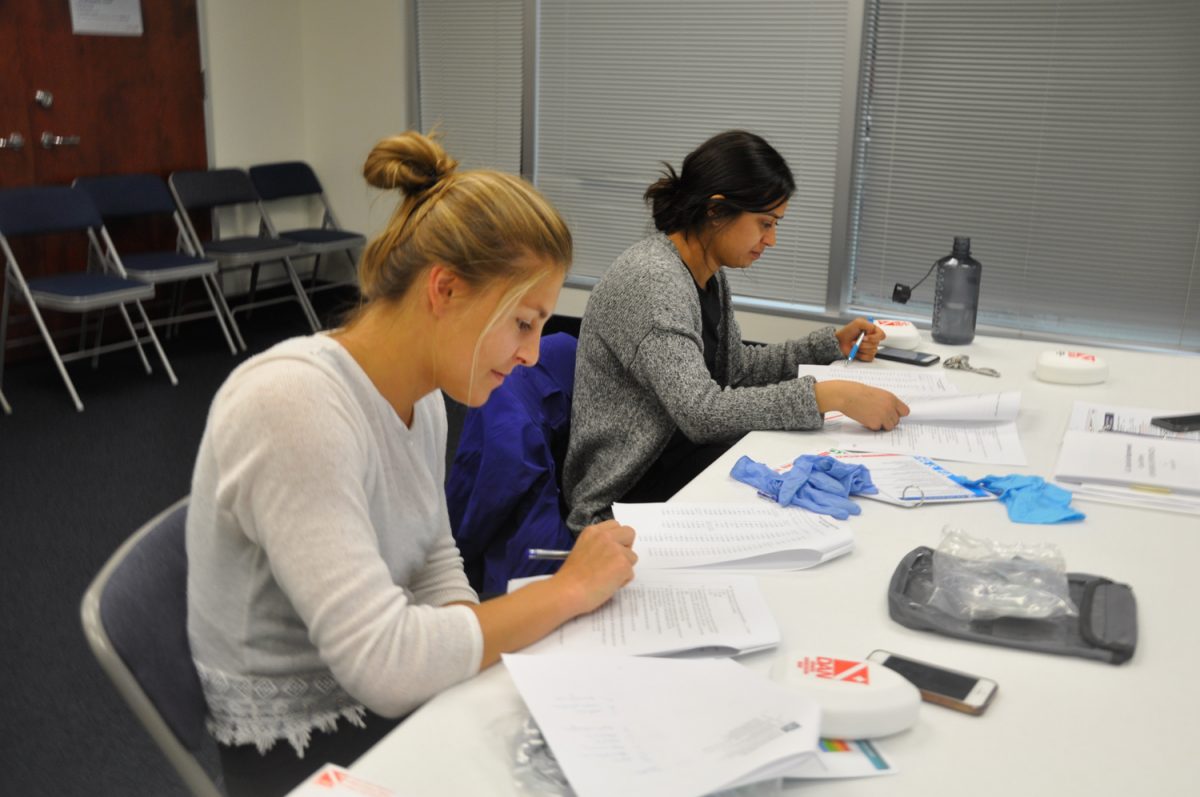
Office of the Chief Medical Examiner of North Carolina
“Meet Dr. Nelson and learn about performing human autopsies to determine the cause of death” – sounds very serious, doesn´t it? But it was actually very inspiring to meet a former NA scholar that has been in my shoes for the same crazy journey as I will do from now on, with the minor difference that it was already in the year that I was born in! One evening Neha, Craig and I also met up with the first ever scholar of OWUSS – Mark Benson. He is such a kind man and a great inspiration, it was great hearing the way the scholarship journey worked about 45 years back, without Email or the Internet to book flight tickets. You have got my biggest respect, Mark!

Craig nowadays is a forensic pathologist at The Office of the Chief Medical Examiner of North Carolina, and works in close connection with DAN to determine causes of death in Diving fatalities. I got to surrender myself in my medical nerdiness once more before leaving North Carolina, with Craig as a second medical nerd – just in another species than the ones that I have performed necropsies on in my studies?
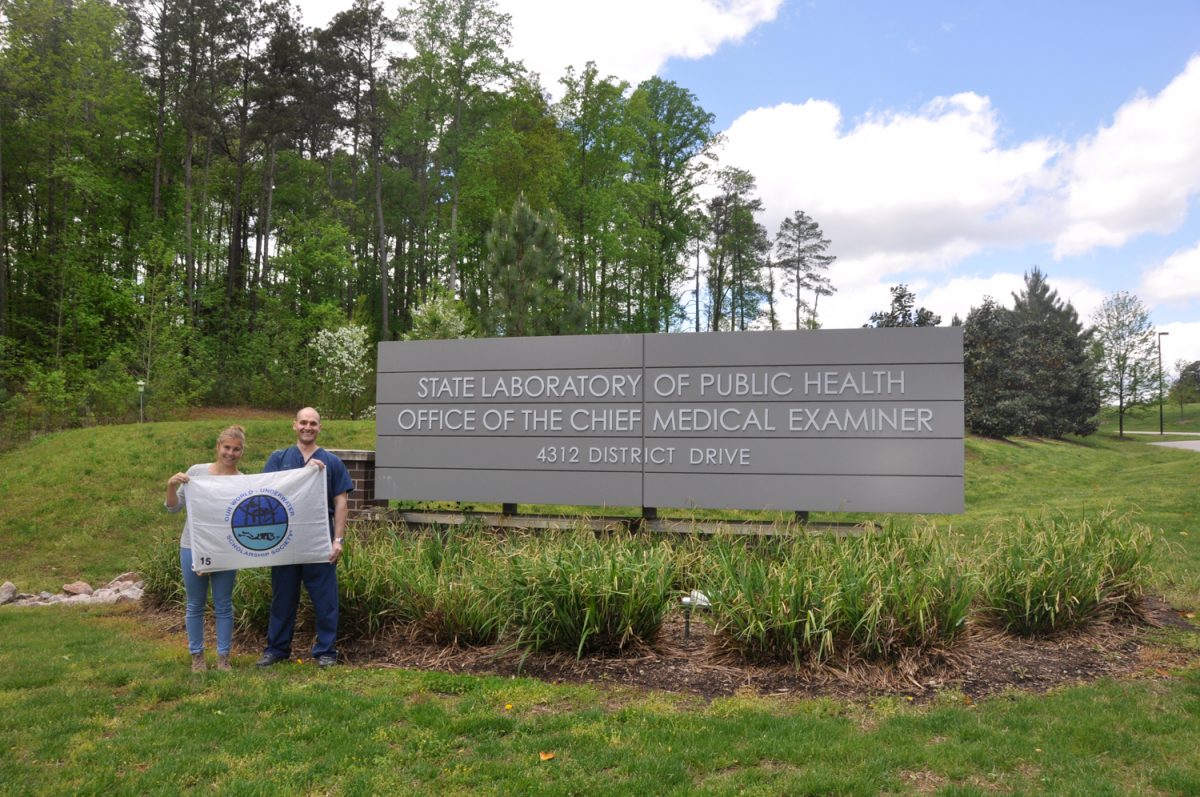
So I got to accompany Craig in some human autopsies, unfortunately (or fortunately?) no diving fatalities, but nevertheless interesting! The comparison of human organs to the many animal ones that I have studied so far made me realise once more: We are all just mammals and have quite equal features – just another reason to treat e.g. marine mammals, but of course also all other marine fauna, with respect and help to conserve these precious living beings in the future.
Craig and his wife also have another interesting passion: They collect historic diving helmets and suits and also dive in them! Unfortunately, there was no time for me to dive in one of them, but I hope to come back to try it out. Craig even handcrafts boots in the old fashioned way for these suits. And you cannot imagine how much just one boot, not to mention the whole gear, weighs!

Visiting Craig rounded up my time in North Carolina. And afterwards, I really needed a few days at home to process all the new things I have learned, as well as the mind-blowing NY weekend of course.